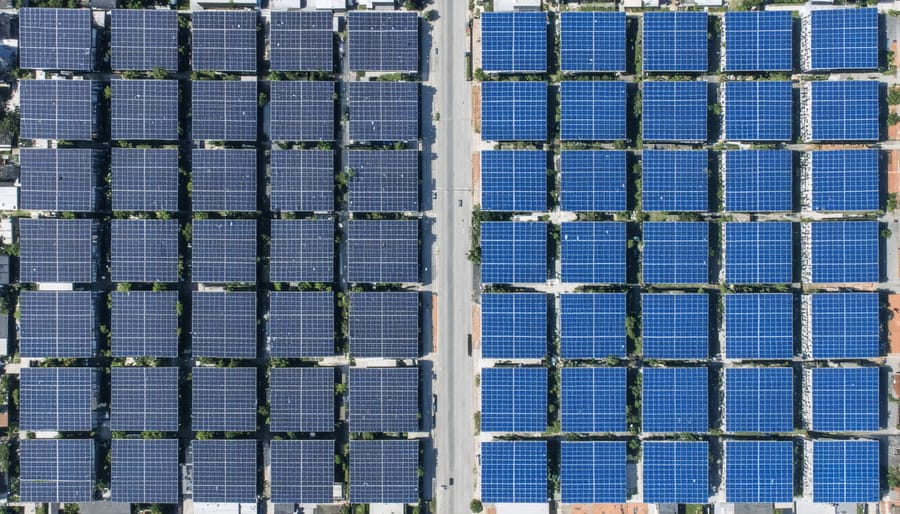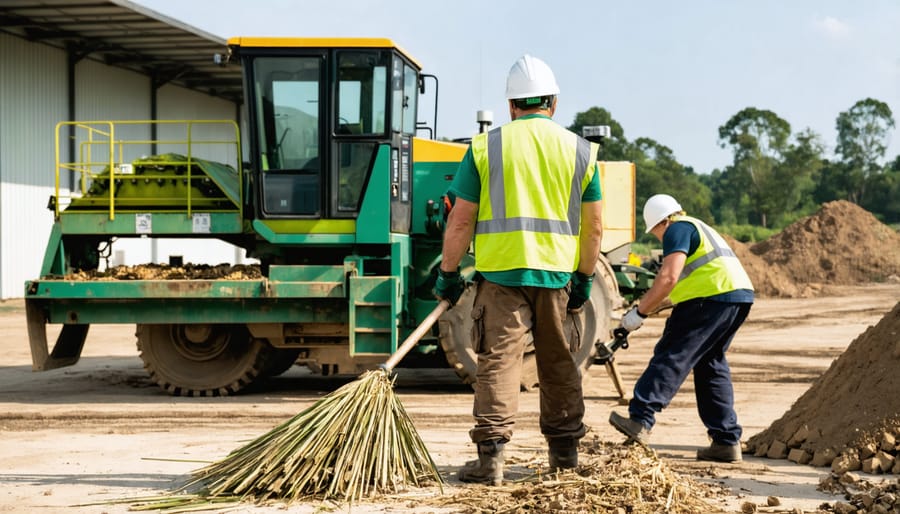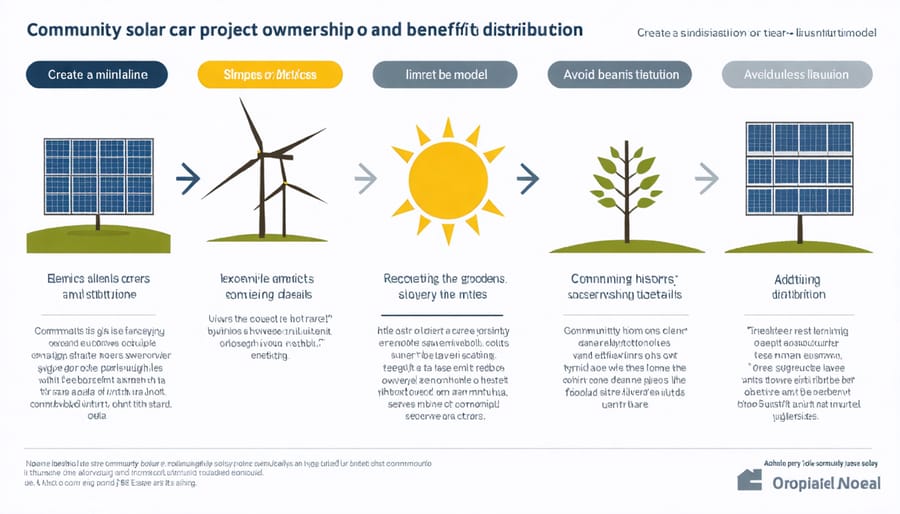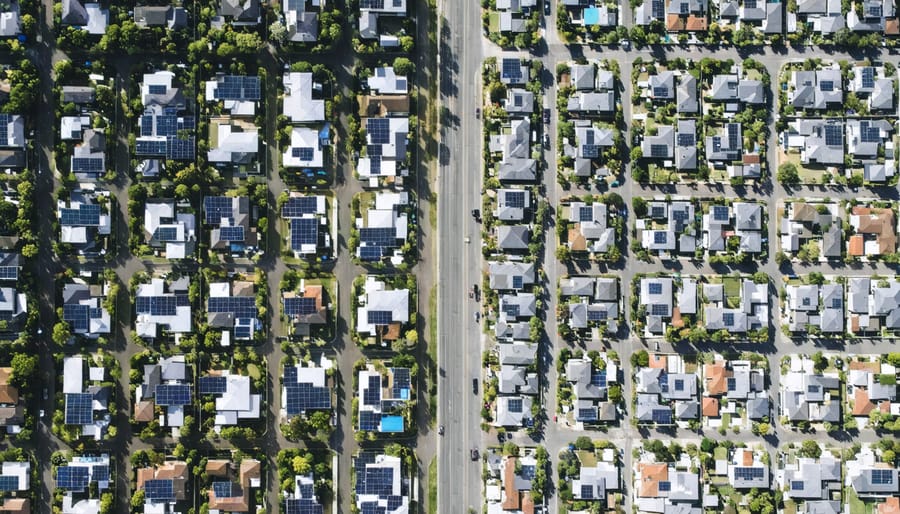In the heart of Australia’s energy transition, a stark reality emerges: access to clean, affordable energy remains deeply divided along socioeconomic lines. While solar panels grace the rooftops of affluent suburbs, many communities struggle with rising energy costs and limited access to sustainable alternatives. Yet within this challenge lies an unprecedented opportunity to reshape our energy landscape into one that serves all Australians equitably.
The path to socioeconomic equity in energy access demands more than technological solutions – it requires a fundamental rethinking of how we distribute, price, and implement renewable energy systems. From community-owned bioenergy projects in regional areas to innovative financing models that make clean energy accessible to renters and low-income households, Australia stands at a crucial crossroads where environmental sustainability meets social justice.
By prioritizing inclusive energy policies and leveraging our abundant natural resources, particularly in bioenergy production, we can create a future where clean energy isn’t a luxury but a fundamental right. This transformation isn’t just about powering homes – it’s about empowering communities, creating local jobs, and ensuring that the benefits of our energy revolution reach every corner of society, regardless of postcode or income level.
The Current Energy Divide in Australia
Urban vs Rural Energy Access
The stark contrast between urban and rural energy access in Australia continues to highlight significant socioeconomic disparities. While city dwellers generally enjoy reliable grid connections and competitive energy prices, rural communities often face higher costs and less reliable power supplies. This disparity has sparked innovative solutions, leading to a remarkable rural energy transformation through decentralised systems and renewable solutions.
Bioenergy projects are emerging as game-changers in bridging this urban-rural divide. Rural communities are increasingly harnessing local agricultural waste and forestry residues to generate their own power, creating energy independence and reducing costs. For instance, some farming communities have cut their energy expenses by up to 40% through locally-operated biogas facilities.
The shift towards renewable energy solutions isn’t just about power generation – it’s creating local jobs, strengthening community resilience, and establishing sustainable economic models. Urban areas are also benefiting from these developments, as successful rural energy projects demonstrate scalable solutions for city-based renewable initiatives, proving that addressing energy equity can create positive ripple effects across all communities.
Income-Based Energy Barriers
Income disparities significantly impact access to sustainable energy solutions, creating a cycle that disproportionately affects lower-income households. Many Australian families struggle to afford the initial investment in solar panels, energy-efficient appliances, or home insulation, despite these technologies offering long-term savings. A typical solar panel installation can cost between $5,000 and $10,000, putting it out of reach for many households living paycheck to paycheck.
This energy divide often results in lower-income communities paying higher energy bills relative to their income, as they remain dependent on less efficient systems and older appliances. The phenomenon, known as “energy poverty,” affects approximately 10% of Australian households, who spend more than 10% of their income on energy costs.
However, innovative financing models and community-based initiatives are emerging to bridge this gap. Pay-as-you-save schemes, bulk-buy programs, and solar gardens allow residents to access renewable energy benefits without substantial upfront costs. Local councils and community organizations are also developing shared solar projects, enabling renters and apartment dwellers to participate in the renewable energy transition regardless of their income level or housing situation.

Bioenergy: A Path to Energy Democracy
Local Resource Utilization
Communities across Australia are discovering innovative ways to turn local resources into valuable energy assets, creating pathways to economic empowerment. From agricultural waste in farming regions to food scraps in urban areas, these readily available biomass resources can become powerful tools for reducing energy costs and creating local jobs.
The key to successful local resource utilization lies in identifying and mapping available biomass sources within the community. Rural areas often have access to crop residues, livestock manure, and forestry waste, while urban communities can tap into food waste from restaurants, markets, and households. By processing these materials locally, communities can generate their own energy while reducing waste management costs.
Several Indigenous communities are leading the way in sustainable resource management, combining traditional knowledge with modern bioenergy technologies. For example, communities in Northern Territory have developed successful programs that convert native vegetation maintenance waste into biochar and energy, creating employment opportunities while maintaining cultural connections to the land.
Local councils are also implementing innovative collection systems that make it easier for residents of all income levels to participate in biomass resource programs. These systems often include free collection services, community drop-off points, and educational programs that help residents understand how their waste can become a valuable energy resource.
The economic benefits of local resource utilization extend beyond energy production, creating opportunities for small businesses, reducing municipal waste costs, and generating revenue that can be reinvested in community development programs.

Job Creation and Economic Benefits
The transition to bioenergy presents significant opportunities for job creation and economic growth, particularly in disadvantaged communities. Rural and regional areas, which often face higher unemployment rates, stand to benefit substantially from the establishment of bioenergy facilities and associated supply chains.
In communities like Shepparton, Victoria, the development of biomass processing facilities has already created dozens of direct jobs in operations, maintenance, and logistics. These positions often require varied skill levels, making them accessible to workers from different educational backgrounds. Additionally, indirect employment opportunities emerge in supporting industries such as transportation, agriculture, and waste management.
The economic benefits extend beyond employment alone. Local farmers can generate additional income by supplying agricultural residues to bioenergy facilities, while indigenous communities can participate in native vegetation management programs that supply biomass feedstock. Small businesses in regional areas also benefit from increased economic activity and reduced energy costs.
Training programs and apprenticeships in the bioenergy sector are creating pathways for young people and career changers, particularly in areas with historically limited employment options. For example, the Western Australian government’s renewable energy training initiatives have helped Indigenous communities develop skills in biomass collection and processing, leading to sustainable employment opportunities.
By prioritizing local workforce development and ensuring fair access to these opportunities, the bioenergy sector is contributing to more equitable economic outcomes across Australian communities.
Policy Solutions for Equal Access
Financial Incentives and Subsidies
Financial support programs play a crucial role in making sustainable energy solutions accessible to all Australians, regardless of their economic status. The government has implemented various initiatives to ensure that low-income households can participate in the renewable energy transition, including bioenergy adoption.
One significant program is the Energy Assistance Payment, which provides direct financial aid to help vulnerable households manage their energy costs. This support is complemented by the Small-scale Renewable Energy Scheme, offering rebates for installing renewable energy systems, making them more affordable for families on tight budgets.
Local councils across Australia have introduced innovative financing options, such as Environmental Upgrade Agreements, allowing property owners to access low-interest loans for sustainable energy improvements. These programs work alongside clean energy standards to create comprehensive support systems.
Community energy projects have emerged as another vital initiative, enabling groups to pool resources and establish shared renewable energy facilities. These projects often include special provisions for low-income participants, ensuring they can benefit from reduced energy costs and potential income from excess energy generation.
The Solar for Low Income Households program has been particularly successful, providing solar panel systems to eligible households at minimal or no upfront cost. This initiative demonstrates how targeted support can make sustainable energy solutions accessible while reducing ongoing living costs for vulnerable communities.
Community Energy Projects
Across Australia, remarkable community-based energy solutions are proving that sustainable power can be both equitable and profitable. The Hepburn Wind Farm in Victoria stands as a shining example, where local residents collectively own and operate two wind turbines that power over 2,000 homes. This pioneering project has become a model for community-owned renewable energy initiatives nationwide.
In northern New South Wales, the Byron Bay Solar Revolution demonstrates how solar bulk-buy programs can make clean energy accessible to households across different income levels. The initiative has helped hundreds of families install solar panels through cooperative purchasing power and flexible payment plans, significantly reducing their energy costs.
The Denmark Community Windfarm in Western Australia showcases how regional communities can take control of their energy future. This community-owned project not only generates clean electricity but also reinvests profits into local sustainability initiatives and education programs.
These success stories highlight how community energy projects create multiple benefits: they reduce power bills, generate local employment, keep energy profits within the community, and ensure fair access to renewable energy across socioeconomic groups. The growing network of community energy initiatives is transforming Australia’s energy landscape, proving that sustainable power can be both environmentally responsible and socially inclusive.

Education and Awareness Programs
Education plays a vital role in bridging the socioeconomic divide in sustainable energy adoption. Across Australia, innovative programs are empowering communities with knowledge and practical skills to participate in the renewable energy transition. Community workshops in regional areas are teaching residents about solar panel installation, maintenance, and energy-efficient practices, making sustainable technologies more accessible to all income levels.
Local councils have launched successful initiatives like the “Energy Smart Neighbourhoods” program, where experienced mentors guide families through energy-saving strategies and help them access available rebates and incentives. These programs have shown remarkable results, with participating households reducing their energy costs by up to 30% while contributing to environmental sustainability.
Schools in disadvantaged areas are incorporating renewable energy education into their curriculum, fostering early awareness and creating pathways to green energy careers. The “Future Energy Leaders” program, for instance, provides hands-on experience with bioenergy systems and solar technologies to students from diverse backgrounds.
Digital learning platforms are making sustainable energy education accessible to remote communities, offering free courses in energy management and renewable technologies. These resources are particularly valuable for Indigenous communities, where traditional knowledge is being integrated with modern sustainable practices.
To ensure widespread impact, many programs now include multilingual resources and culturally sensitive approaches, reaching traditionally underserved populations and creating more inclusive pathways to sustainable energy adoption.
Measuring Success: Equity Indicators
To effectively track progress in socioeconomic equity within the energy sector, Australia has developed several key indicators that serve as benchmarks for success. These measurements help communities, policymakers, and energy providers ensure that sustainable energy solutions benefit all members of society.
Energy affordability remains a primary indicator, measured through the percentage of household income spent on energy bills across different socioeconomic groups. A fair energy system should show decreasing disparities in this metric over time. Currently, many communities are tracking monthly energy cost variations, with successful programs demonstrating reductions of 15-25% in energy spending for lower-income households.
Access to clean energy technologies serves as another crucial benchmark. This includes monitoring the distribution of solar installations, energy-efficient appliances, and participation in community energy projects across different postcodes and income levels. Progressive communities have achieved up to 40% participation rates in renewable energy programs among disadvantaged households through targeted initiatives.
Infrastructure quality and reliability provide additional metrics for equity assessment. Regular surveys measure power outage frequencies, response times to service issues, and grid maintenance across different neighborhoods. Successful equity programs show comparable service levels regardless of location or community wealth.
Employment opportunities in the clean energy sector offer another valuable indicator. Leading organizations track job creation, training programs, and career advancement opportunities for historically underrepresented groups. Some regions have achieved impressive results, with up to 30% of new renewable energy jobs going to workers from disadvantaged backgrounds.
Community engagement levels also serve as essential metrics, measured through participation rates in energy planning meetings, program enrollment, and feedback sessions. Successful initiatives typically see engagement rates of 20% or higher across all demographic groups.
Regular reporting and transparency are vital for these indicators to drive meaningful change. Many communities now publish annual equity scorecards, allowing stakeholders to monitor progress and adjust strategies as needed. This data-driven approach ensures that the transition to sustainable energy truly serves all Australians, creating a more equitable and inclusive energy future.
The path to a sustainable energy future must be paved with equity at its core. Throughout this discussion, we’ve explored how socioeconomic disparities impact access to clean energy solutions and examined the transformative potential of bioenergy in bridging these gaps. The evidence is clear: when implemented thoughtfully, renewable energy initiatives can simultaneously address climate challenges and social inequalities.
To create lasting change, we must act collectively. Government bodies should prioritize inclusive policy frameworks that ensure renewable energy benefits reach all communities, particularly those historically underserved. This includes targeted subsidies, community ownership models, and skills training programs that create local employment opportunities.
The private sector has an equally important role to play by developing innovative financing solutions and business models that make clean energy accessible to all income levels. Success stories from communities across Australia demonstrate that when we prioritize equity in energy planning, everyone benefits – from reduced energy costs to improved air quality and new economic opportunities.
As we move forward, let’s commit to supporting policies and initiatives that promote fair access to sustainable energy. Whether you’re a policymaker, industry professional, or concerned citizen, your voice matters in advocating for equitable energy solutions. By working together, we can create a future where clean, affordable energy is not a privilege but a right for all Australians.
The time for action is now. Let’s ensure our transition to renewable energy leaves no one behind and creates a legacy of environmental and social justice for generations to come.

